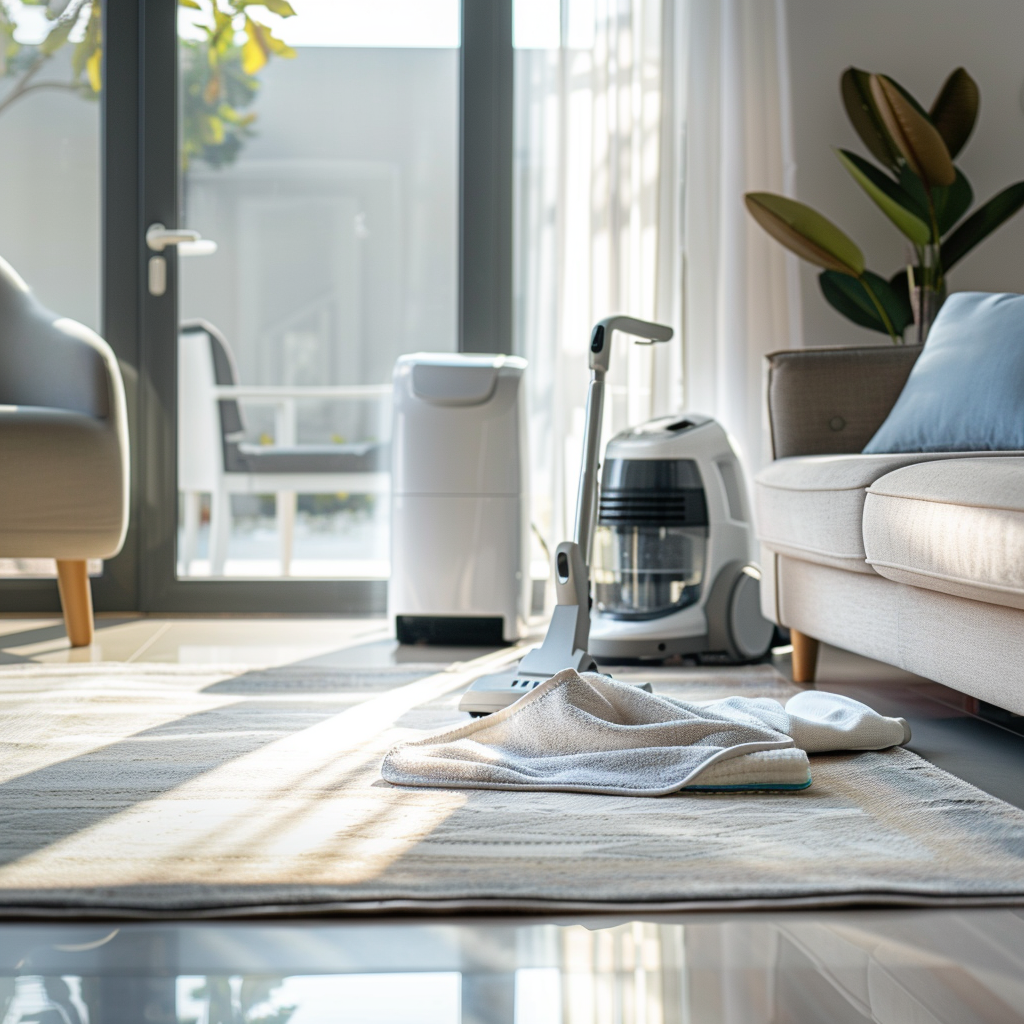Living with allergies can make everyday tasks, like cleaning your home, feel overwhelming. Dust, pollen, pet dander, and even cleaning products themselves can trigger allergy symptoms, leaving you in a constant battle to keep allergens at bay. But don’t worry—you don’t have to compromise your comfort to keep a clean house. In this article, we’ll explore essential cleaning tips that will help allergy sufferers minimize their exposure to allergens, all while keeping their homes spotless and comfortable.
1. Choose the Right Cleaning Products
One of the biggest misconceptions is that any cleaning product will do the job. For people with allergies, this isn’t always the case. Many conventional cleaning products contain harsh chemicals and fragrances that can irritate your airways and trigger allergic reactions. Opt for hypoallergenic, fragrance-free, or natural cleaning products that are gentler on the senses and still effective.
Unique Insight: Did you know that simple ingredients like vinegar and baking soda can be just as effective as chemical-based cleaners for many household tasks? They’re also less likely to cause allergic reactions.
Actionable Tip: Look for eco-friendly or certified “asthma & allergy-friendly” cleaning products when shopping. You can also make your own natural cleaners using ingredients like lemon juice, baking soda, and vinegar for an even safer option.
2. Dust Frequently and Effectively
Dust is one of the most common allergens found in homes, so regular dusting is essential for allergy sufferers. However, the way you dust matters. Dry dusting can spread allergens into the air, making the problem worse. Instead, use a damp cloth or a microfiber duster that traps dust rather than dispersing it.
Actionable Tip: Always dust from top to bottom, starting with higher surfaces like shelves and working your way down. This ensures that any falling dust will be cleaned up at the end. Don’t forget to dust overlooked areas like ceiling fans, light fixtures, and blinds.
Unique Insight: Microfiber cloths are more effective at trapping allergens than traditional dusters. They can remove up to 99% of allergens and particles without the need for cleaning chemicals.
3. Vacuum with a HEPA Filter
Vacuuming is another critical task in reducing allergens, but not all vacuums are created equal. Traditional vacuums can release dust and allergens back into the air. For allergy sufferers, using a vacuum equipped with a HEPA (High-Efficiency Particulate Air) filter is essential. These filters trap tiny particles, including dust mites, pet dander, and pollen, instead of allowing them to escape back into your living space.
Actionable Tip: Aim to vacuum high-traffic areas at least twice a week and lower-traffic areas once a week. Pay special attention to carpets, rugs, and upholstered furniture, as they tend to trap more allergens.
Pro Insight: Don’t forget to regularly clean or replace your vacuum’s HEPA filter, as clogged filters can lose effectiveness over time.
4. Wash Bedding and Fabrics Regularly
Dust mites thrive in soft, warm environments, making your bedding and other fabrics a hotspot for allergens. To reduce dust mite buildup, wash your bedding—sheets, pillowcases, and duvet covers—weekly in hot water (at least 130°F). This will kill dust mites and remove any accumulated allergens.
Actionable Tip: Don’t forget to wash curtains, throw pillows, and other fabric-based décor items regularly. Consider using dust-mite-proof covers for mattresses and pillows to create an additional barrier against allergens.
Bonus Tip: If you’re allergic to pet dander, keep pets off the bed, and wash any pet bedding weekly as well.
5. Control Humidity Levels
High humidity levels can lead to mold growth, which is another common allergen. Keeping the humidity in your home between 30-50% can help reduce mold and dust mite populations. Use a dehumidifier in areas that tend to be damp, like the bathroom, basement, or laundry room.
Actionable Tip: Keep an eye on potential moisture-prone areas, such as under sinks or around windows, and address leaks or condensation issues as soon as they arise. Regularly clean bathroom tiles, shower curtains, and grout to prevent mold growth.
Unique Insight: Houseplants can sometimes contribute to mold growth. If you have plants, make sure the soil is not overly damp, and avoid placing them in bedrooms where mold can easily spread.
6. Take Your Shoes Off at the Door
A simple yet effective tip for reducing allergens in your home is to implement a no-shoes policy indoors. Shoes track in outdoor allergens like pollen, mold spores, and dirt, which can quickly spread across your floors and carpets.
Actionable Tip: Set up a designated spot near your entryway for shoes, and encourage family members and guests to leave their footwear at the door. You can also place mats both outside and inside the entrance to trap particles before they get in.
Pro Insight: Using a high-quality air purifier with a HEPA filter can help remove airborne allergens and improve indoor air quality, especially in areas where allergen buildup is common.
Conclusion: A Cleaner Home, Fewer Allergies
By incorporating these essential cleaning tips into your routine, you can create a home environment that is not only clean but also much less likely to trigger your allergies. From choosing the right products and tools to establishing smart cleaning habits, there are many ways to reduce allergens and breathe easier in your home.












